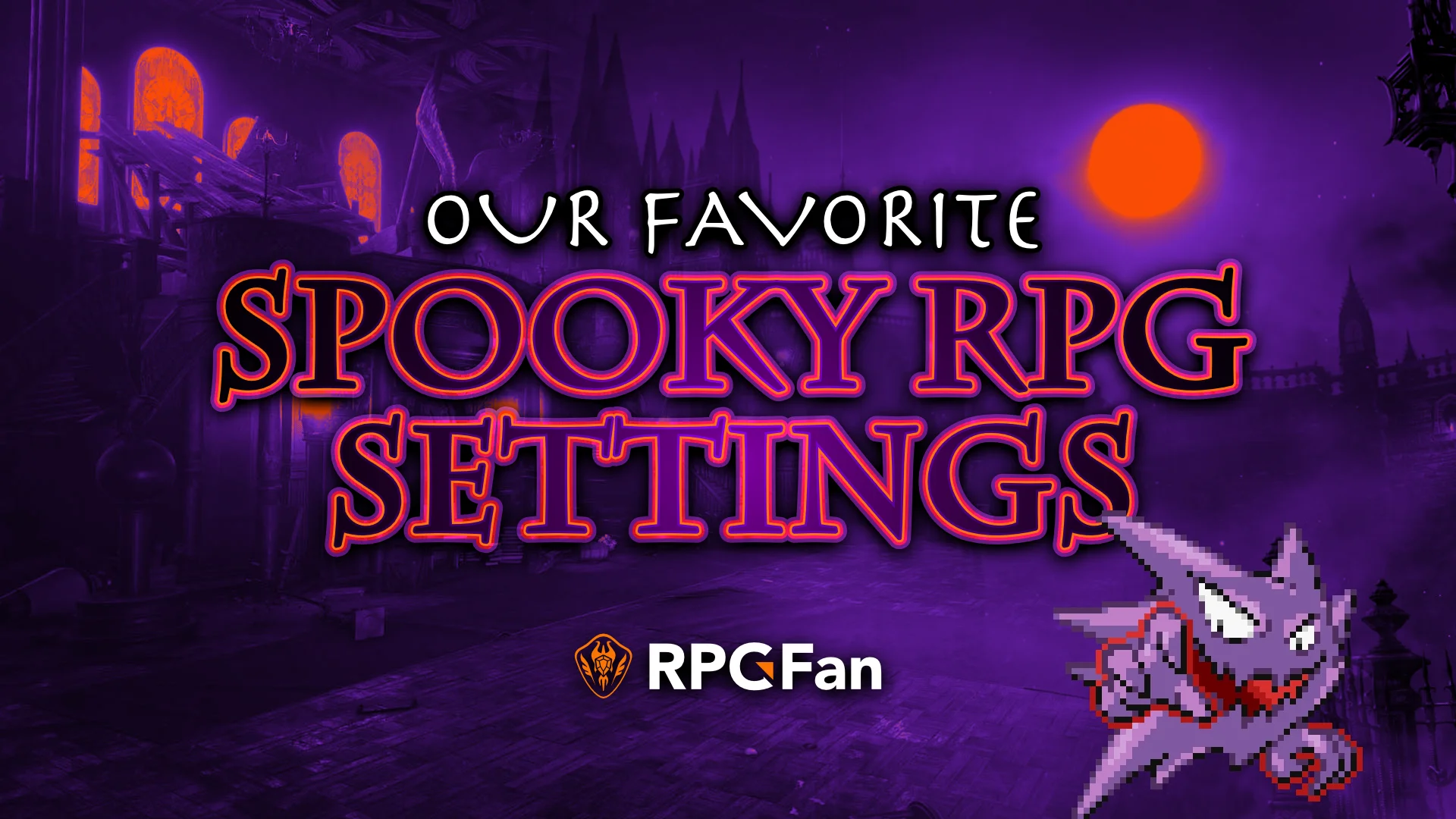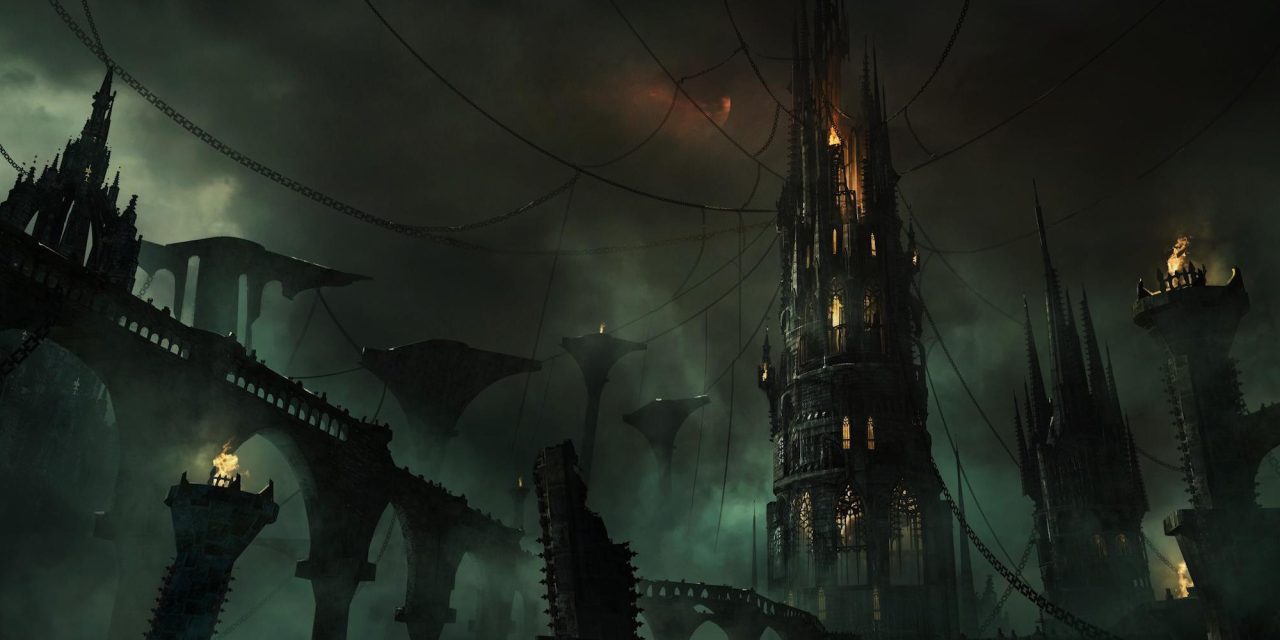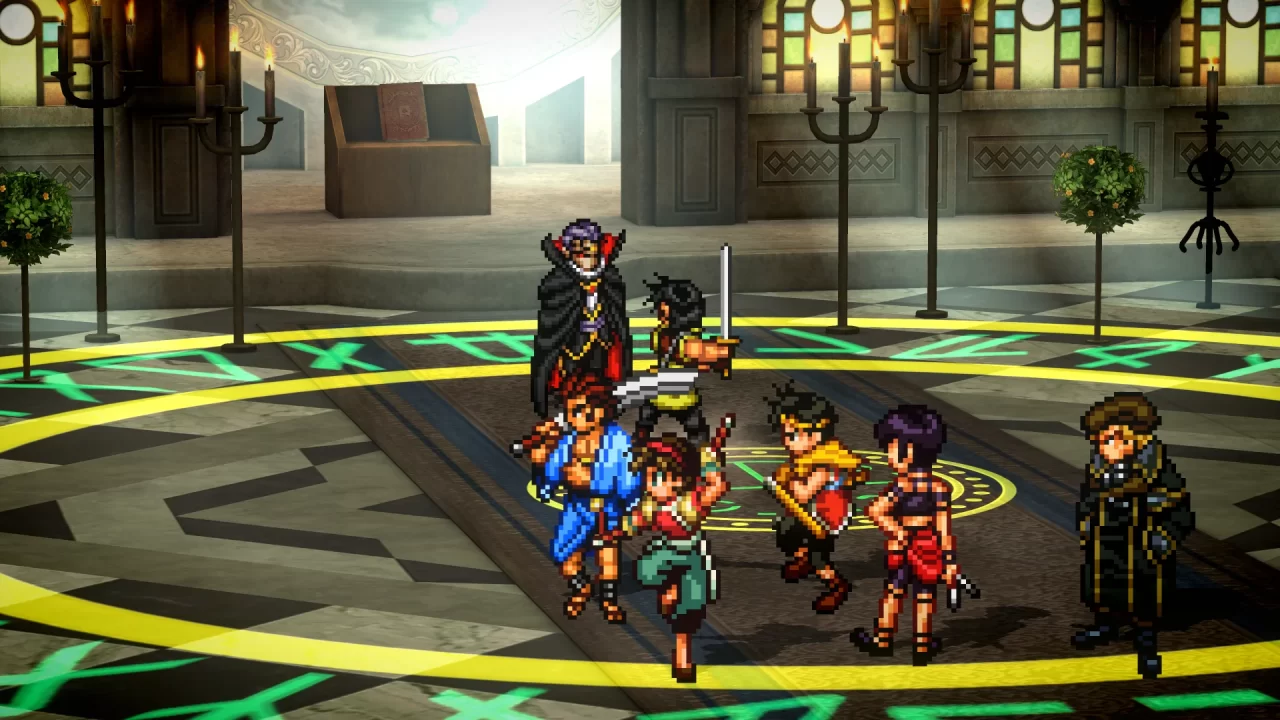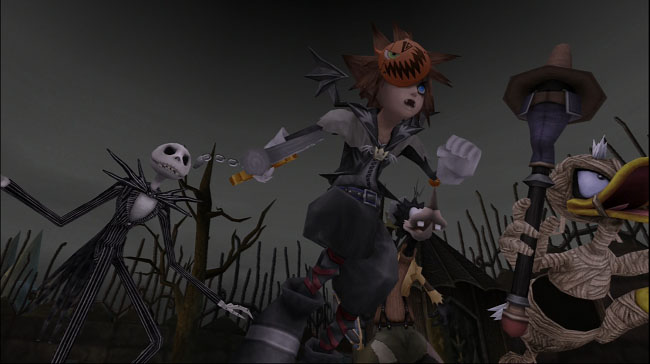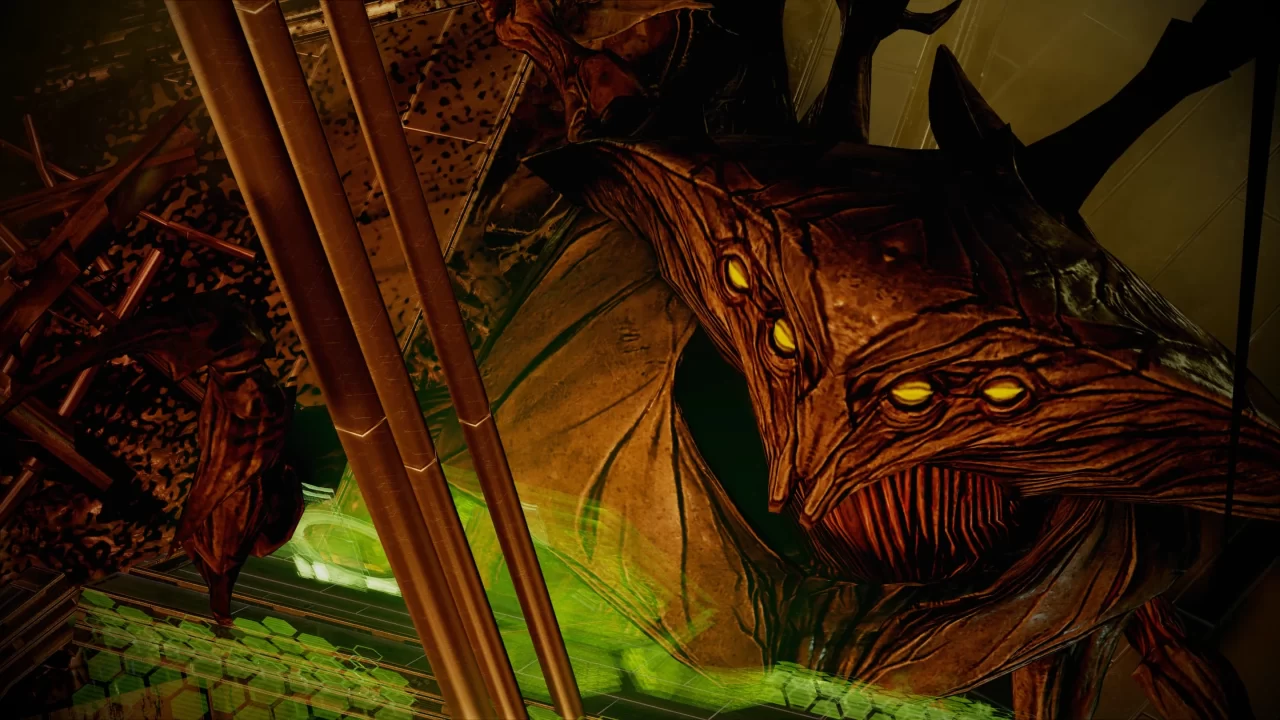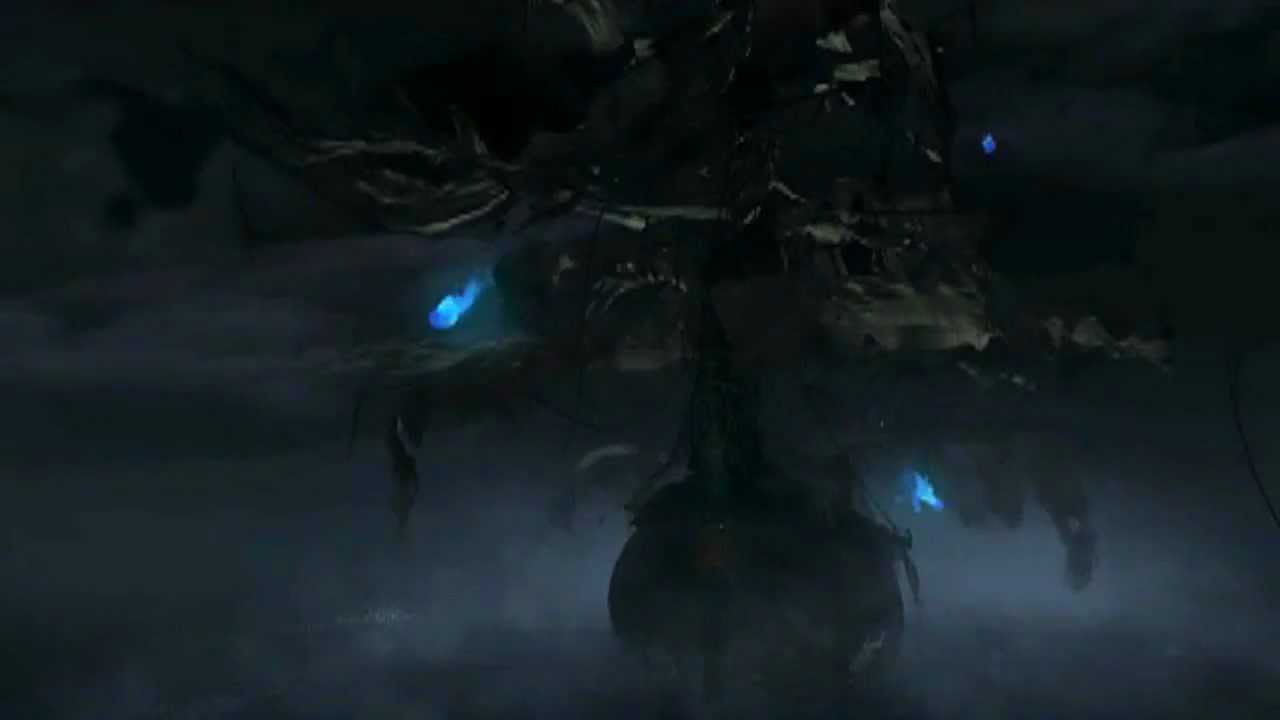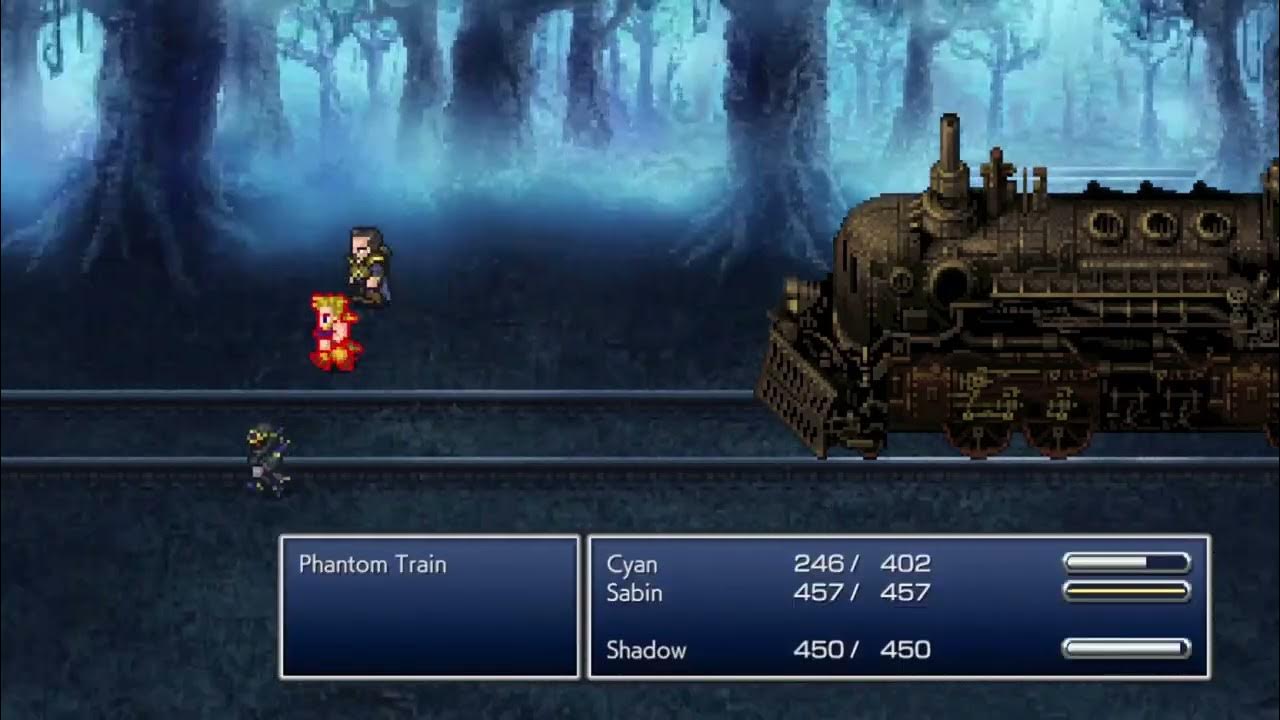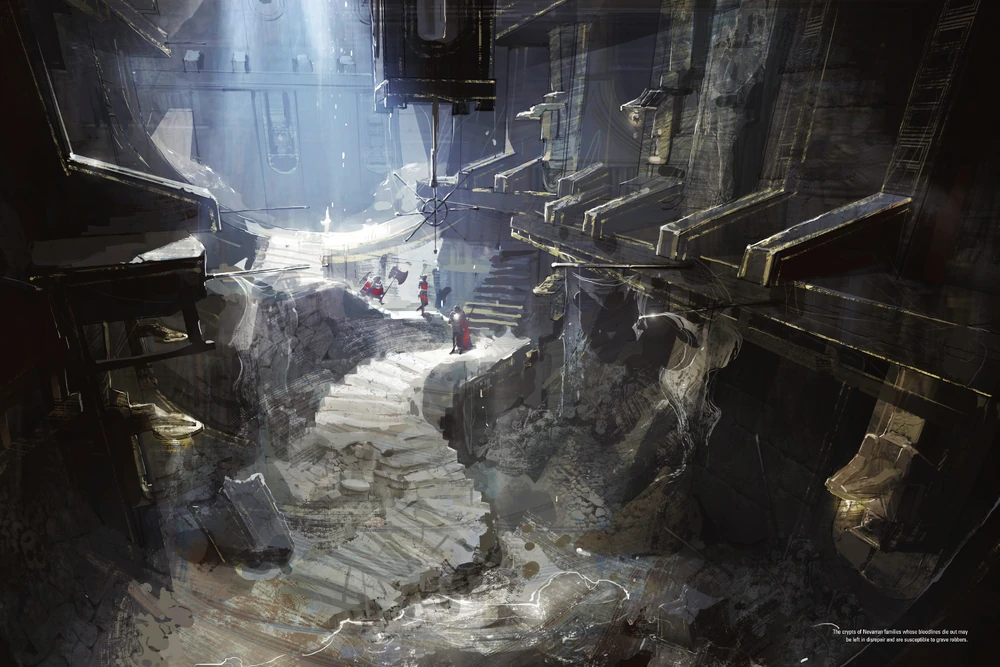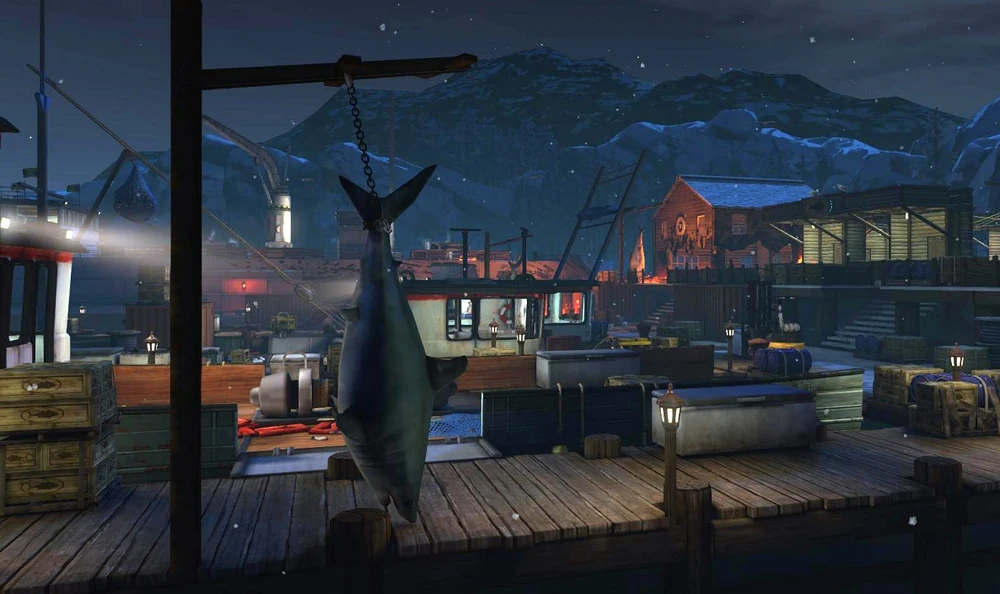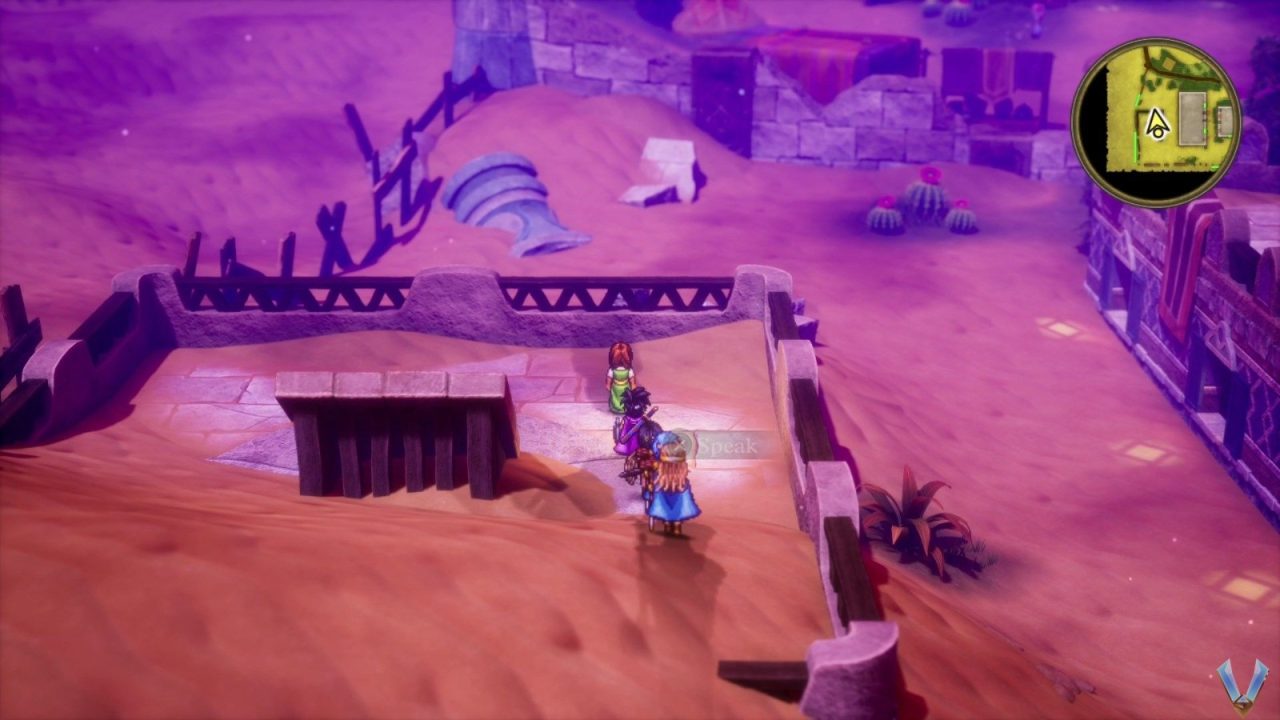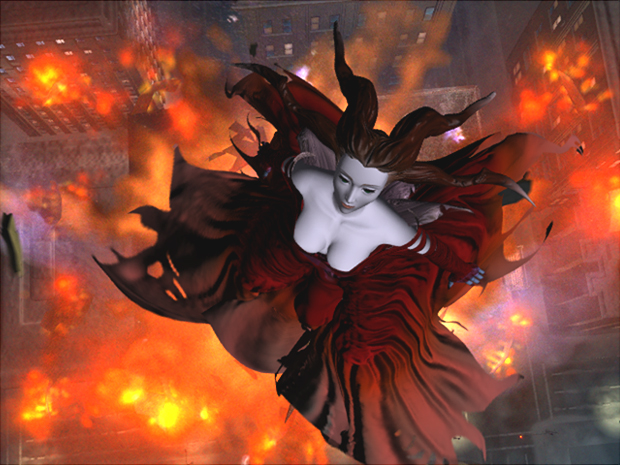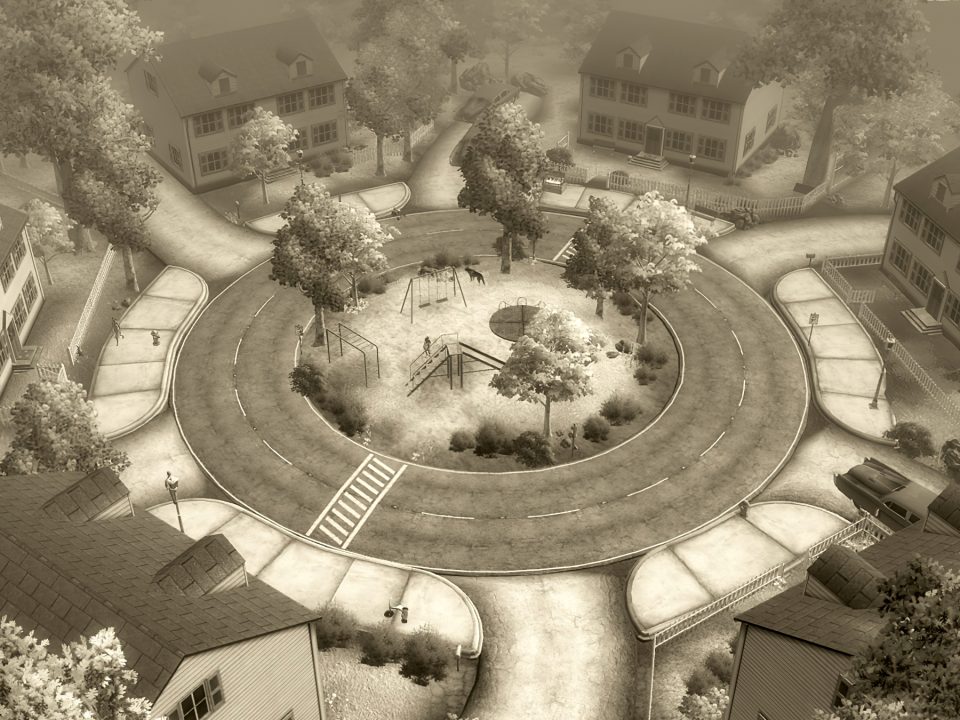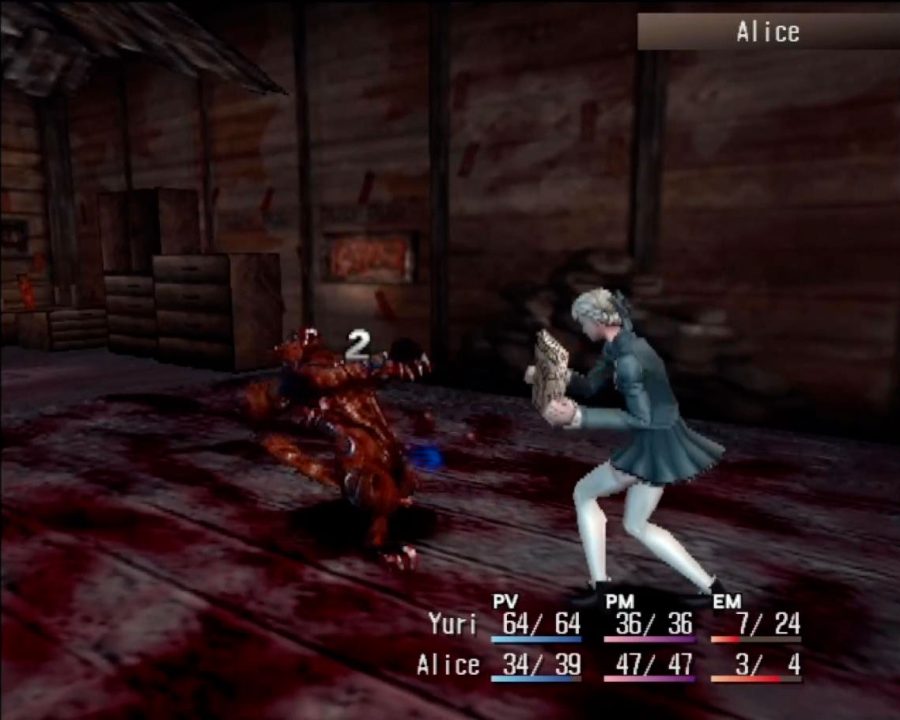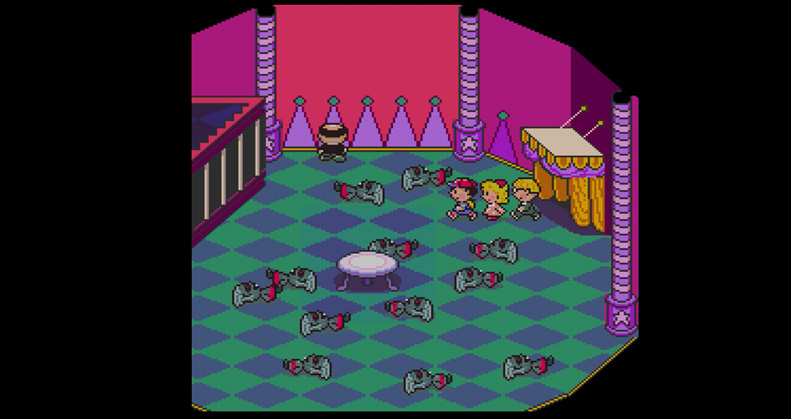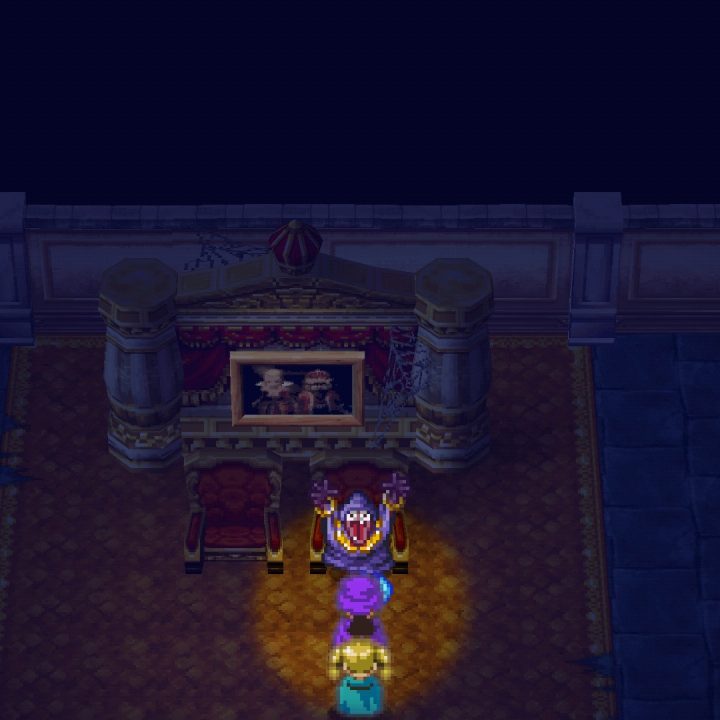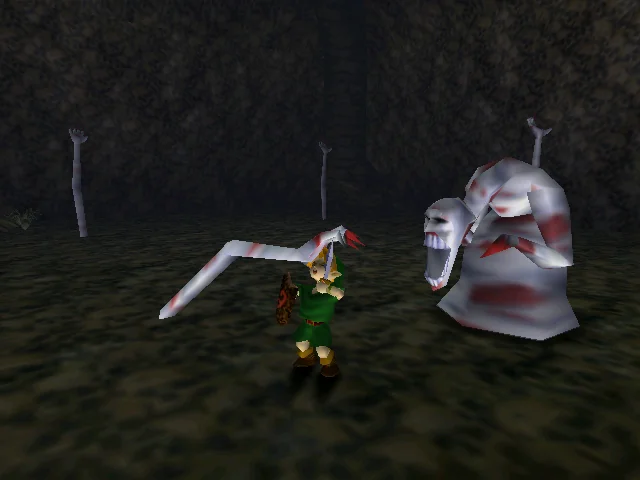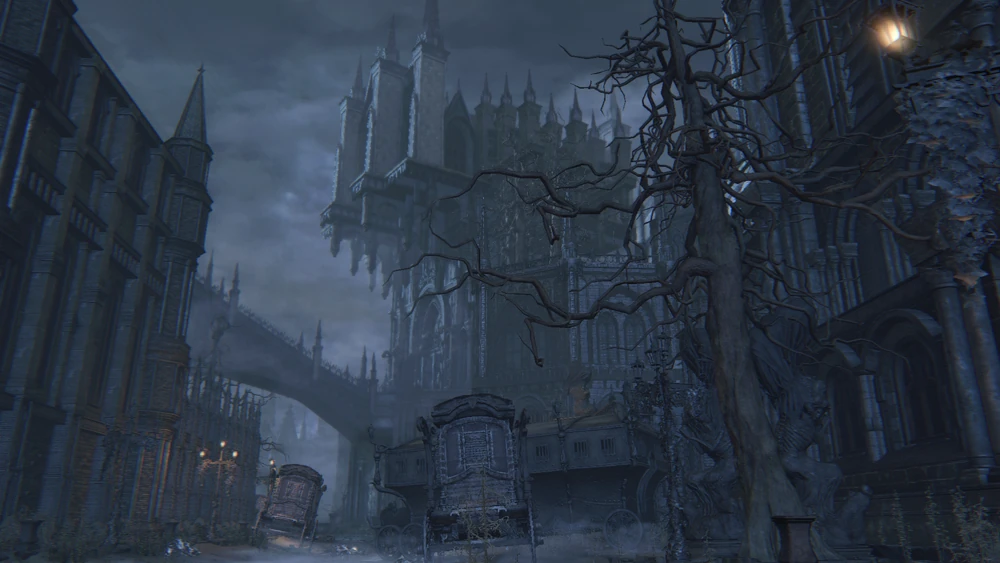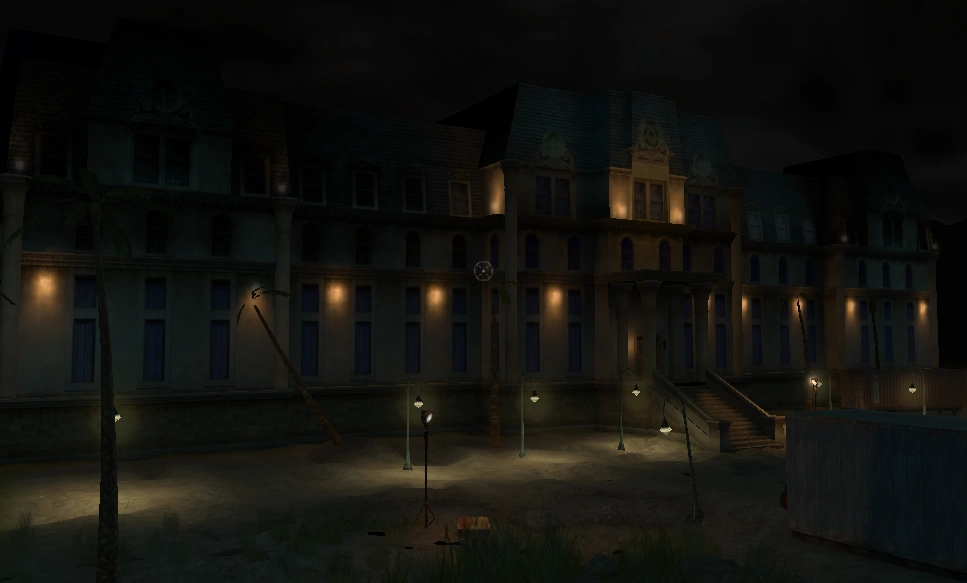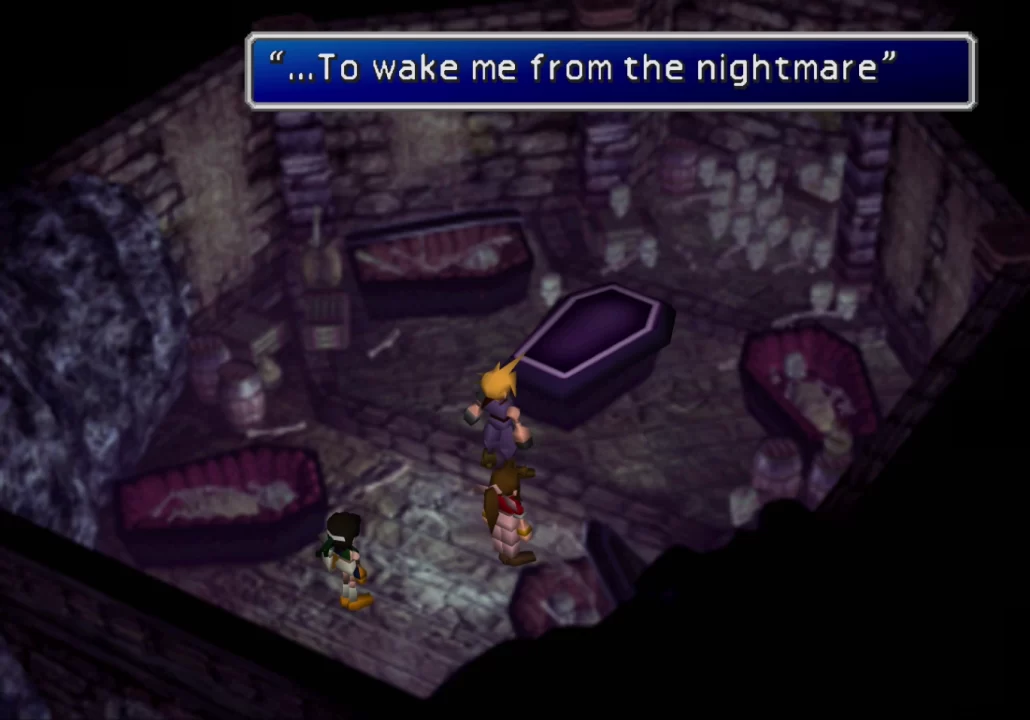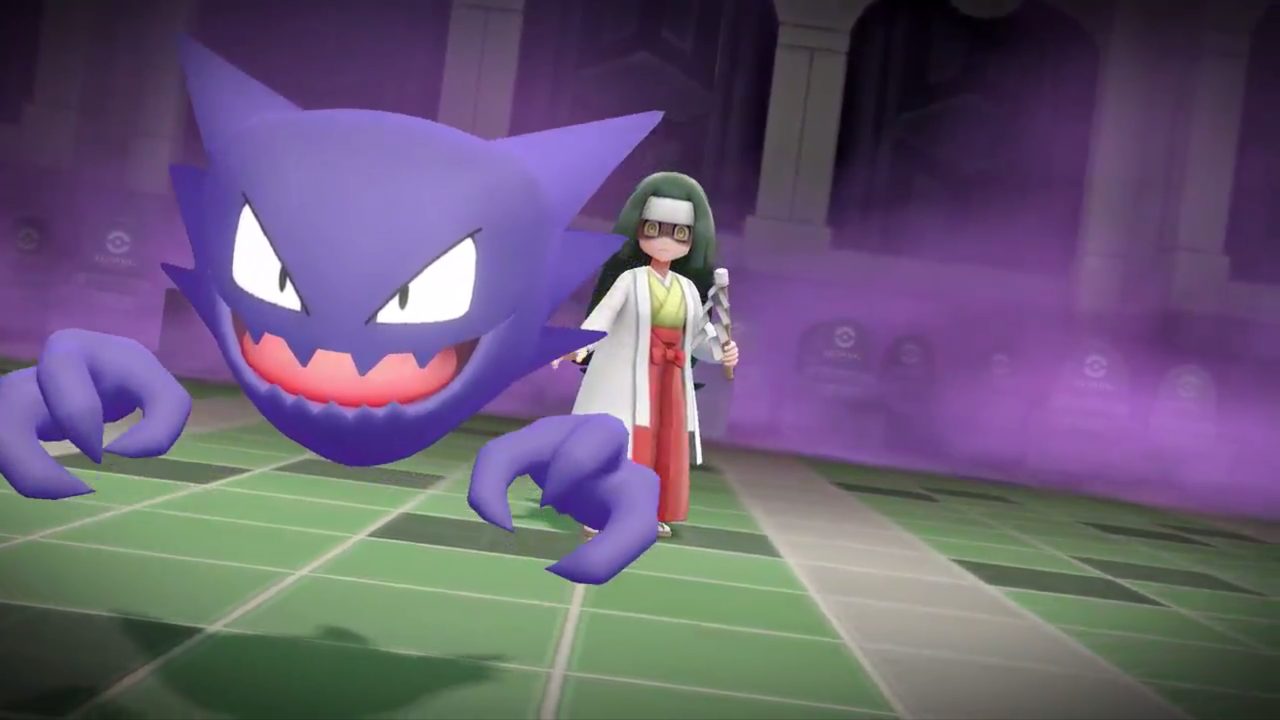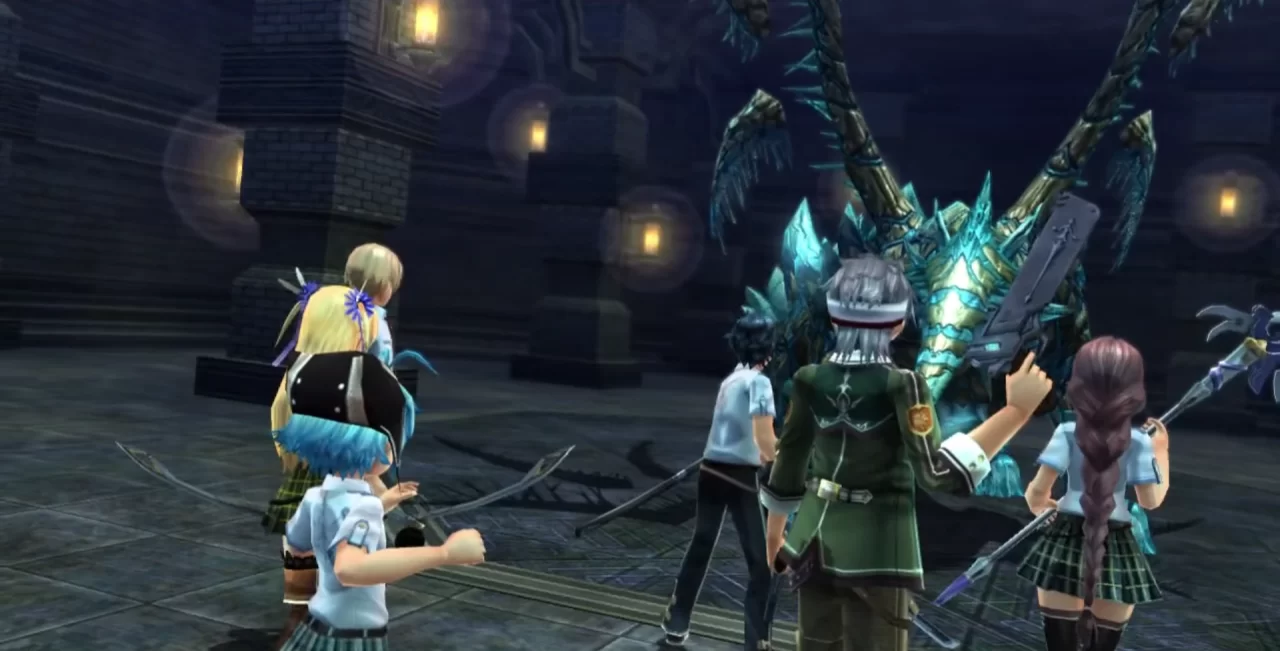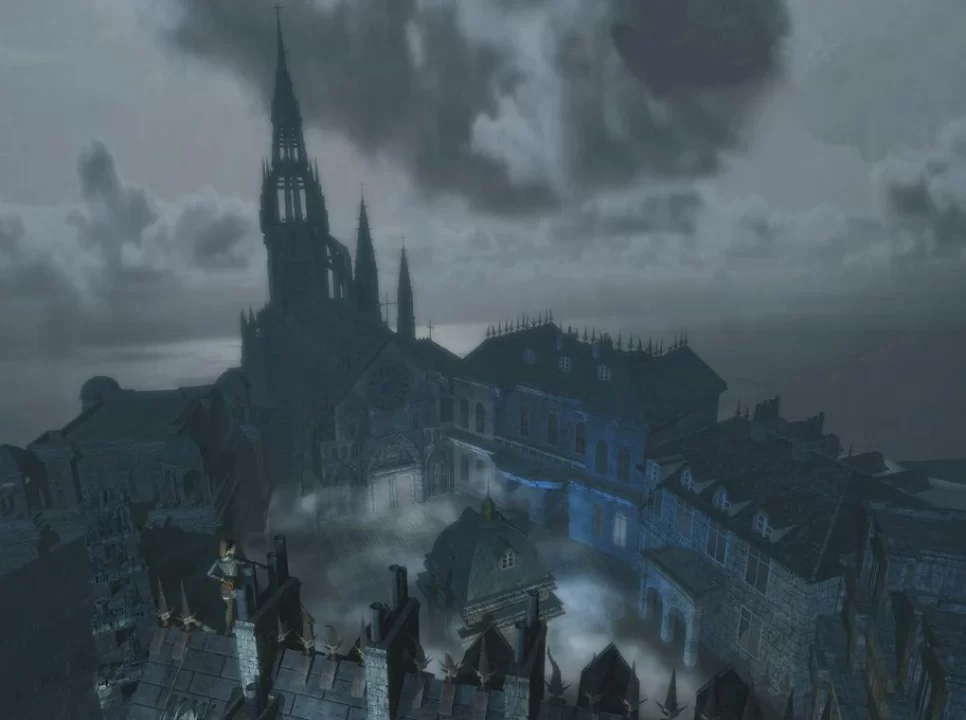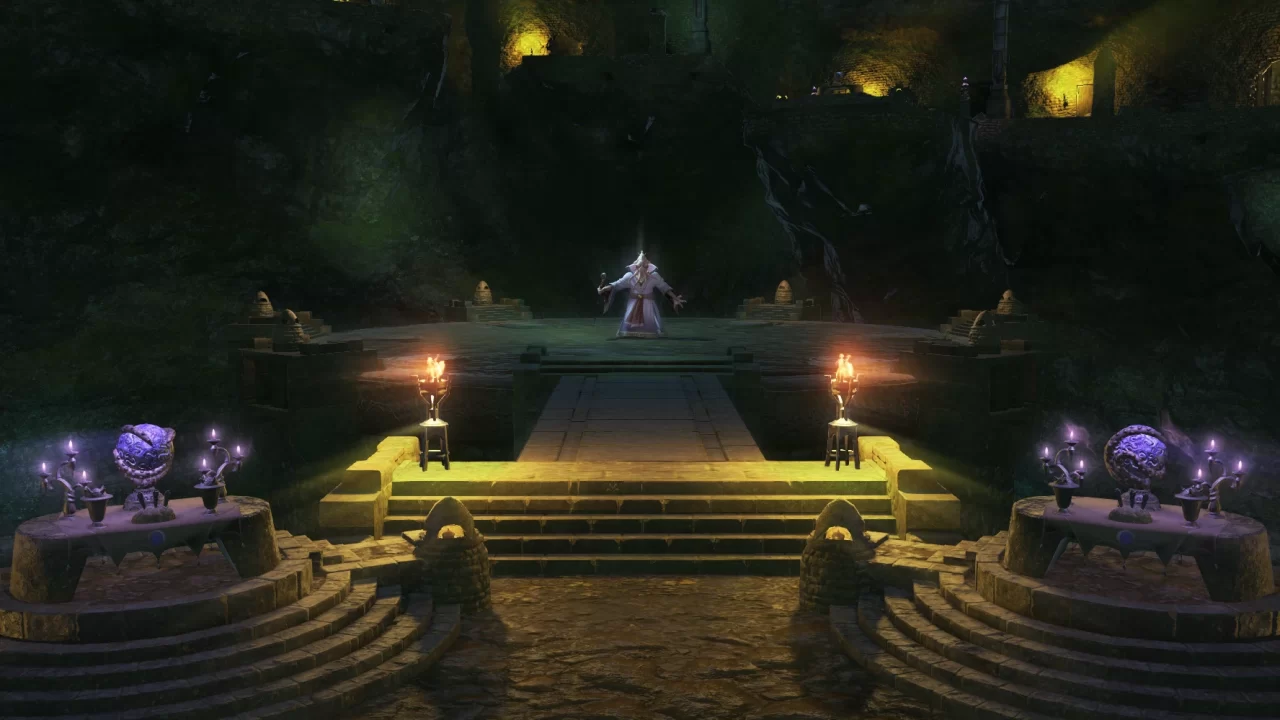I don’t really like haunted houses or jump scares. But you know what I do love? A good spooky RPG setting.
A lot of our staff feels the same, so we decided to put together a list of our favorite “spooky” settings in RPGs! You’ll see some you’ll expect, some you might not, and everything in between. Honestly, there are a couple of settings that are so spooky I’m not sure I want to play those games again.
Who did we miss? What are some of your favorite settings? Are you as scared of Demon’s Souls as I am? Be sure to let us know on X, Facebook, Instagram, Threads, Discord, Bluesky, or however you most enjoy interacting with us!
Intro by Zach Wilkerson
Demon’s Souls – Tower of Latria
Writeup by Rob White
I find the world of Demon’s Souls the most intriguing, bleak, and nightmarish of all FromSoftware’s dark fantasy offerings. I also can’t think of anywhere else in RPGs that scares me quite as much as the Tower of Latria. I imagine most people would probably suggest the Valley of Defilement is worse, and those levels are pretty bad too, but it’s Latria that affects me the most.
This place fills me with dread from the get-go—a prison made up of narrow, maze-like corridors and cells that you must navigate in darkness. Horrific sounds echo in the distance, and Mindflayer enemies quietly lurk everywhere, ready to surprise you, paralyze you, and one-shot kill you if you’re not paying attention. I cannot play the Latria levels without feeling so anxious and tense that my heart races and I’m on the edge of panic at any moment. Props to FromSoft for absolutely nailing the Lovecraftian atmosphere here, but yeah… this is seriously scary stuff.
Suikoden – Neclord’s Castle
Writeup by Jimmy Turner
I don’t have much experience with the Castlevania series, but that doesn’t mean I haven’t had my fill of trouncing through a vampire lord’s castle in video games. Neclord is one of the most challenging bosses that the Liberation Army must face in Suikoden. Tir, Victor, and company storm his castle to rescue a Warriors’ Village chief’s daughter from becoming his bride. All the tropes you’d expect from a spooky castle are here as players must overcome sorcerers, specters, and hell unicorns?!
When players meet Neclord in Suikoden, it feels out of place. However, in a game known for its half-baked ideas and less fleshed-out content than its beloved sequel, a journey to put an end to a Dracula clone’s tyranny with the aid of a talking sword is one of the most memorable parts of the experience.
Kingdom Hearts – Halloweentown
Writeup by Jimmy Turner
Being a huge Disney fan as a kid certainly fed my love for Kingdom Hearts. The Nightmare Before Christmas has always been a cult favorite amongst Disney fans, and I am a card-carrying member of that cult. Of all the iconic Disney worlds Square Enix included in the first game, none does a better job of incorporating the Heartless storyline into the setting. Jack Skellington would absolutely want to utilize the mysterious shadow monsters to create a more frightening Halloween celebration.
Unfortunately for Sora, Donald, Goofy, and Jack, Oogie Boogie interferes in Jack’s efforts to make scarier Heartless, leading to a fun boss fight beneath Oogie’s manor. Kingdom Hearts does a fantastic job capturing the visuals, sounds, and characters in Halloweentown that make the movie so beloved. The spooky hamlet appeared in later games, and it remains the best example of why I love Kingdom Hearts.
Mass Effect 2 – Collector Base
Writeup by Audra Bowling
In space, no one can hear you scream, but you can be thoroughly unsettled by what’s uncovered there, like the Collector Base in Mass Effect 2. Known for its downright creepy atmosphere and setting, the whole area screams “sci-fi horror” as you progress and uncover more of its terrifying secrets. It certainly doesn’t help that, throughout Commander Shepard’s harrowing trek through nightmare-fueled spaces, you’re also literally battling against time as the fate of the Normandy SR-2’s kidnapped crew hangs in the balance. Plus, the decisions you make about who does what in different gameplay phases along your Collector Base journey determine who lives and dies during the “suicide mission” you-as-Shepard sends the party on.
The Collector Base is a memorable experience that’s both intense and stressful. It combines gameplay decision loops with a horrific atmosphere and an overall disturbing thematic presentation, causing you to grip the controller tightly as you sit playing on the edge of your seat.
The Legend of Dragoon – Phantom Ship
Writeup by Neal Chandran
A striking CG FMV cutscene about halfway through The Legend of Dragoon introduces a truly creepy ghost ship that requires more fortitude than conquering many games’ final dungeons. The Legend of Dragoon’s phantom ship claims countless victims to fill the bottomless void of its regretful failures in life. Instead of the usual random encounters, visible wisps trigger battles, though they are unavoidably everywhere, truly punctuating the ship’s insatiable hunger. Battles themselves are no joke, and only prolong the party’s duration in this dank dungeon. The music’s dissonant instrumentation and eerie sound effects make this creepy dungeon even more unsettling. Surviving The Legend of Dragoon’s phantom ship (which players often hail as one of the game’s most irritating dungeons) felt like the hell of riding a bike-a-thon I had not adequately prepared for. But once it was over, I was left panting, “Whew! I truly survived one hell of a ghost ship!”
Final Fantasy VI – Phantom Forest & Phantom Train
Writeup by Patrick Gann
If you haven’t played Final Fantasy VI in a while, you may have forgotten the specifics of the three split scenarios early in the game. For those who do remember, recall Sabin as he heads east and encounters Cyan and Shadow. They work together in an attempt to stop the Empire’s forces from encroaching on Doma Castle, when Kefka shows up and does something despicable. As Sabin and crew flee, they find their way into a misty, spooky forest with incredibly spooky music. The spookiness goes from eerie to exhilarating on the Phantom Train, where players can recruit ghosts to fight alongside them. After an opportunity to suplex the train, Sabin and Cyan exit the ghostly scenario only to see the recently deceased boarding this train in a somber ending to the scenario.
Dragon Age: The Veilguard – Nevarra
Writeup by Tina Olah
Follow a mischievous glowing wisp and make your way down to Nevarra, an ever-changing kingdom of necromancers, both friendly and otherwise. Start your visit by helping the city’s death mages clear out some nasty demons and cult members lurking in the halls of the Necropolis (but please don’t break the expensive antique furniture). Once things have settled down a bit, you can enjoy a relaxing stroll through the beautiful Memorial Gardens, and perhaps even sit down for a spot of tea served by an animated skeleton with stylish emerald goggles. If you feel like travelling beyond the Necropolis walls, I recommend visiting Blackthorne Manor, a sinister haunted house where evil rituals have taken place. Pay no mind to the crumbling ceiling and random bodies; this luxurious abode is definitely worth the trip, especially for its extensive library, splendid suites, and… oh no. I assumed this large and elaborately-sealed door would lead to an even larger library, not… ah heck, I wish to exit the premises now!!
XCOM: Enemy Within – Site Recon
Writeup by Pete Leavitt
XCOM: Enemy Unknown has penned its place in history as one of the most successful reboot efforts to date. Developer Firaxis’ innovations in UI, control, and mechanics made the game approachable in a genre that previously only catered to the most hardcore, without compromising on what made those experiences so rewarding: the punishing difficulty, the emphasis on decision-making, and cerebral gameplay.
In the excellent expansion Enemy Within, the Site Recon mission comes from the mysterious Council, who charges you with investigating a fishing village in Canada. The zombified villagers and occasional arachnid chrysalid obstruct your way to the apparent source of a chrysalid infection: a large fishing boat. A whale carcass is a breeding hive for this terrible enemy, and the more time passes, the more chrysalids will burst from the rotting mammal.
You must quickly activate the boat’s transponder and run through the whole map back to your evac point, while being accosted by enemies that force your team to cover each other. It’s sweaty stuff, and many first-time players will have experienced the bitter necessity of leaving a squad member behind to cover the team’s retreat, making the mission something of a skill gate for many newbies.
This excellent mission shed light on something that didn’t occur to many people back then: Tactical games can be atmospheric, creepy, and heart-poundingly exciting. Site Recon encompasses all of those qualities beautifully.
Dragon Warrior – Hauksness
Writeup by Jerry Williams
Imagine you just got a free copy of Dragon Warrior with your Nintendo Power subscription, and you were unknowingly about to dive into your first RPG ever. That was me in 1990. Cute visuals, a constant sense of wonder as I explored the open world—I was hooked. At six years old, my heart was (kind of) gentle and pure. I had enough sense to know that the little homestead icon on the map represented a bastion of safety, and as I ventured daringly down the west coast of the map, I saw an oasis in the desert. I didn’t know it, but I was staring down Hauksness. Drained of resources, I barely got in and was met by sheer horror. With aspects of a town—those shopkeeper tables stood out to me—I realized there was something wrong. A few steps in, I was absolutely slaughtered by a Wizard. I was supposed to be safe! After that, I looked on at the town from afar with actual fear.
Parasite Eve – Carnegie Hall
Writeup by Noah Leiter
Clack. Clack. Clack. Aya Brea’s 6-inch platform heels echo through a deafened Carnegie Hall; charred piles are all that’s left of her fellow spectators. Moments ago, the storied theatre was lit up by a passionate stage performance, but now it has fallen to dead silence—save for the siren song of the titular Eve, and the echo of Aya Brea’s heels in pursuit of her.
The opening moments of Parasite Eve are a thrilling cortége; they are a procession through silence, emotion, and fire, backdropped by the surreal ambiance of New York City on a snowy Christmas Eve night. It’s no wonder the best Halloween media is Christmas media. Don’t believe me? Check out Still Wakes the Deep (2024), Black Christmas (1974), Brom’s Krampus (2020), and The Gremlins (1984). Christmas horror rules, dude. There’s a haunting parity between the warmth of holiday tradition and the stifling silence of snowfall outside that makes for excellent spookytime. And Parasite Eve perfectly embodies that tradition in its introductory scenes.
Fallout 3 – Tranquility Lane
Writeup by Noah Leiter
Note: discussion of the present moment. Also mild spoilers.
Horror never changes, and Fallout 3 would know. It is a game full of horror tropes: a post-apocalyptic setting, monsters of all shapes and sizes, creepypasta-worthy audio/computer logs, skeletons in toilets, and an overwhelming green film tint, to name a few. But none of these give me the heebie-jeebies quite like Tranquility Lane, which surprisingly contains zero of these things.
In fact, Tranquility Lane, as the name would suggest, is an ostensibly peaceful place punctuated by nice music and peppy, friendly residents. However, something dark lurks underneath its Pleasantvillian air — that is, it functions both as a torture device and as a reflection of the promise of the vaults. Tranquility Lane is a simulated neighborhood made to experiment on people, sandwiched somewhere between the memory of pre-war America (now a wasteland, notably borne of the same culture that would produce Tranquility Lane and other places like it) and the vicious mindscape of its creator, who invented this digital universe as a moral (and literal) torture trap.
What’s really scary, though, is Tranquility Lane’s reflection of our current reality, one that turns toward censorship, misinformation, and surveillance, things we thought were reserved for speculative fiction but now show up in our daily lives. Perhaps it has been that way for some time, and speculative fiction is merely a vehicle for media like Fallout 3 to transcribe the fears of a culture in crisis. Perhaps Fallout 3’s proximity to the 2008 housing crash produced Tranquility Lane, and our current cultural moment is an uncanny reproduction of that moment’s terrors. Which just goes to show: horror never changes.
Shadow Hearts – Zhaoyang Village
Writeup by Scaredy Sybydlo
Shadow Hearts is THE essential horror RPG. Pick any part: The creepy orphanage that experimented on people, the seaside village Dalian that curses those left out at night, the creepy dollhouse where dolls want to play with the people, or the four cursed masks that relentlessly follow Yuri as penance for his own inner darkness (even when “defeated,” they haunt him as long as his curse remains).
But I want to single out how Shadow Hearts makes a strong first impression. After narrowly escaping capture on a train, Zhaoyang Village is a quaint first town to visit and would make for a humble beginning! Until you learn that the local shrine is stacked with human bones and the land itself is cursed. That means visitors can’t leave, and the citizens have no compunction about admitting that they’re cannibals and that Yuri and Alice look delicious. We fight back and win—but this was not the relaxing first night with new party members we’d have expected!
EarthBound – Threed
Writeup by Gio Castillo
EarthBound is far from a horror game, but it packs a fair number of twisted set pieces underneath its cute exterior (that it’s able to pull off such dissonance attests to why it’s one of the best ever made). One such sequence sees Ness and Paula hitch a ride with the Runaway Five, and the vibes abruptly change from triumphant to oppressive once they get outside the van. While Happy-Happy Village was run by a cult and Onett had a police brutality problem, Threed is just straight-up haunted.
The streets are infested with zombies, the graveyard’s overrun with trash can ghouls, and the hotel’s got some shady business going on. Things become a little silly again after we find out about Zombie Paper and that a sentient puddle of puke is behind it all, but the early goings-on in Threed are as survival horror as it gets in EarthBound.
Dragon Quest V – Uptaten Towers
Writeup by Gio Castillo
Uptaten Towers is an inspired choice for a first dungeon. The main character is a wee six-year-old lad at the start of Dragon Quest V, so for him to venture through a haunted castle establishes his character in a “show, don’t tell” way that remains quite rare, even today. Joined by the tough and kind-hearted Bianca, our hero agrees to do some ghostbusting at Uptaten to stop some bullies from tormenting a poor sabrecat cub.
The actual dungeon isn’t all that scary, but it has its moments, especially if you think of it from a kid’s perspective. The party gets buried alive early on, and they later meet some skeletons with a hankering for… tasty children. The random encounters are also a bit taxing at this point, yet none of that is enough to faze our intrepid duo, who ultimately persevere and save the day. Quite a start for what is quite a remarkable little RPG, I’d say.
The Legend of Zelda: Ocarina of Time – Bottom of the Well
Writeup by Stephanie Sybydlo
More than 25 years later, some piddly dungeon with Nintendo 64 graphics still gives me the creeps. Somewhere between the haunting music, bloodied floors, invisible walls, skeletal remains, a poison lake (with hands sticking out of it!), creepy faces everywhere, and a mix of Zelda “enemy all-stars” of ReDeads, Wall Masters, and the infamous Dead Hand that uses extraneous limbs to grab you while the main body bites you!
The Zelda series isn’t averse to exploring scary places, but Ocarina of Time’s well is a special kind of atmospheric shift, because it’s all nightmare fuel. It’s easy to become disoriented and hard to figure out exactly what to do. Every moment lost delays you from returning to the sweet sunlight above.
I’m not sure why a torture chamber is at the bottom of Kakariko’s water reservoir—and I’m not sure I want what they’ve been drinking.
Bloodborne: Hypogean Gaol
Writeup by Aleks Franiczek
So, I was minding my own business, taking a stroll through Yarnham’s Cathedral Ward and enjoying its lovely Gothic urban vistas. Then, I see this big dude with a bag standing menacingly in a corner of the city streets. “I should kill this guy,” I thought. But oh man, was he more powerful than I expected. He bashed my Hunter’s brains in. Just another Souls-style death—or so I thought.
Expecting to revive at the last cozy lamp I rested at, I was instead bagged up and whisked away to the oppressive hellhole known as Hypogean Gaol (how the cool kids spell “jail”) with no easy way out. It was equal parts terrifying and brilliant. It’s unnerving enough to be in the gaol and face off against its creepy monstrosities at all, but to reach it through such a subversion of player expectation is what made it imprint itself in my mind as a truly horrific experience.
Vampire: The Masquerade – Bloodlines: Ocean House Hotel
Writeup by Aleks Franiczek
The whole of Vampire: The Masquerade – Bloodlines is drenched in spooky-core aesthetics, which is no surprise given its name and source material. But there’s only one level in the game that led to my blood pressure rising and paranoia-induced neck turning.
The Ocean House Hotel is the best example I’ve seen of a haunted house converted into videogame form. As you enter and make your way through the abandoned building, lightbulbs pop, objects move erratically and can damage you, while voices and bodies suddenly appear and disappear. At one point, you fall through stairs and end up stuck in a dilapidated basement with claustrophobic corridors and noisy machinery. My favorite touch is that there’s no real “combat” in the entire level—even if it feels like there could be at any moment. It’s all about ambience, anticipation, and getting in your head, which has made it one of the most memorable levels in an RPG I’ve ever played.
Final Fantasy VII – Shinra Mansion
Writeup by Mark Roddison
By the time you reach Nibelheim, the dense plot of Final Fantasy VII and Cloud’s personal story collide with his memories as a young soldier from five years earlier. The callbacks hit fast across the village and character dialogue, but the mansion—a literal haunted house—calls the loudest. This archetypal Victoriana structure, with its wooden staircase and extravagant chandelier, drips with overbearing pathos. Enemies prowl its halls during Cloud’s return, and secrets lie in wait for anyone who digs deep enough. Yet the real impact comes not from combat but from the creeping dread, the eerie emptiness, and the score’s heartbeat percussion and lonely tolling bell. Shinra Mansion terrifies because of what it reveals to Cloud and the crew: a reality twisted from the one they remember. Maybe that’s why it hits so hard—because the ultimate horror is in believing you’re not really you, but something else.
Pokémon Red & Blue – Lavender Town
Writeup by Matt Wardell
Okay, I’ll take the low-hanging fruit—and you know why? Lavender Town was likely one of the first in-game areas to traumatize two generations of unsuspecting children, if we consider the FireRed and LeafGreen remakes (and leave out the later softened, less spooky Let’s Go, Pikachu!/Eevee! remakes).
Hey, kids! Did you know your beloved Pokémon will one day die? Even without the endless creepypastas and urban legends this town spawned, the way it recontextualizes the ghost-type Pokémon is nothing if not disturbing for millions of kids isolated into their first RPG experience. I remember the haunting music of Lavender Town immediately discomforting me, so much so that I escaped into the happy-go-lucky music of the Pokémon center… only to find a bunch of the town’s residents meandering around talking about Cubone’s dead mother! I’ll pin Lavender Town right up alongside Ernest Scared Stupid and the Swamps of Sadness in The NeverEnding Story for when millions of therapists ask, “So where did it all begin?”
The Legend of Heroes: Trails of Cold Steel – The Old Schoolhouse
Writeup by Paul Skevington
With the release of Trails in the Sky 1st Chapter, my thoughts returned to the continent of Zemuria, so when the topic of spooky RPG settings came up, it was the first thing that came to mind. Although I’ve picked the setting of the Old Schoolhouse, nestled behind Thors Academy, I could have chosen any number of locations from the Trails series. There are many places where the supernatural intersects with the everyday, often emphasised by the gameplay mechanics themselves, as standard enemy elements (water, fire, etc.) are replaced by “higher” ones, such as space and mirage. Instead of the innocuous, sometimes even cute monsters of the open roads, we meet spirits and demons much more disturbing to behold. The weight of this place is unsettling, in stark contrast to the almost cozy nature of the world surrounding it. The Old Schoolhouse itself seems almost alive—an ancient construction steeped in history, as all the best haunted structures are.
Koudelka – Nemeton Monastery
Writeup by Des Miller
The Shadow Hearts series is the poster child for horror RPGs, yet it all started with that series’ precursor, Koudelka. The game mixes turn-based tactical combat with survival horror to create a truly unique experience that emphasizes dread over jump scares. The entirety of Koudelka takes place over a single night in a single location: Nemeton Monastery. While the monastery is meant to be sacred, it’s anything but. Political prisoners facing life sentences were ruthlessly tortured to death, leaving behind naught but ghosts to haunt the halls.
While the tortured souls and shambling corpses were enough to frighten me, the monastery itself feels like a tragic villain that’s hit rock bottom, only to fall through the floor and sink even further into misery. Every inch of the monastery is a theater of tragedy, and to this day, I remember it just as vividly as Resident Evil’s mansion.
Final Fantasy XIV: A Realm Reborn – Tam-Tara Deepcroft
Writeup by Des Miller
For one of the first dungeons in Final Fantasy XIV: A Realm Reborn, the Tam-Tara Deepcroft is surprisingly creepy. The Deepcroft is essentially a crypt where the residents of Gridania lay their dead to rest, until a cult takes over and begins summoning voidsent monsters into the corpses within.
While the first visit to the Deepcroft is suitably spooky, the second visit is where the location truly shines a bloody red. A fellow adventurer whose party met its end in the Deepcroft has since taken over, driven by the death of her fiancé. Weeks pass as she desperately searches for ways to revive her dead lover—including dabbling in necromancy—all so that she can have the dream wedding she was robbed of. Reading her torn journal pages and counting the corpses is unsettling enough, but facing the woman and her lover’s head at the end of the visit cement Tam-Tara Deepcroft as one of the most unforgettable and haunting locations in the game.
Well, you made it to the end! If you want more seasonably appropriate reading from us, have you read The Blood is the Life: The Best Vampires in RPGs? I can’t think of a better time to, really.

